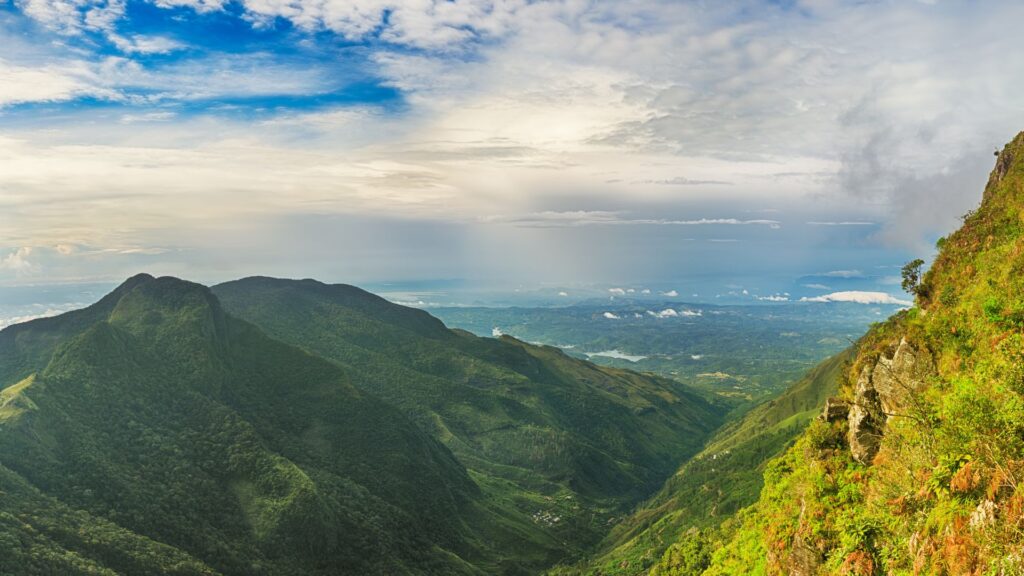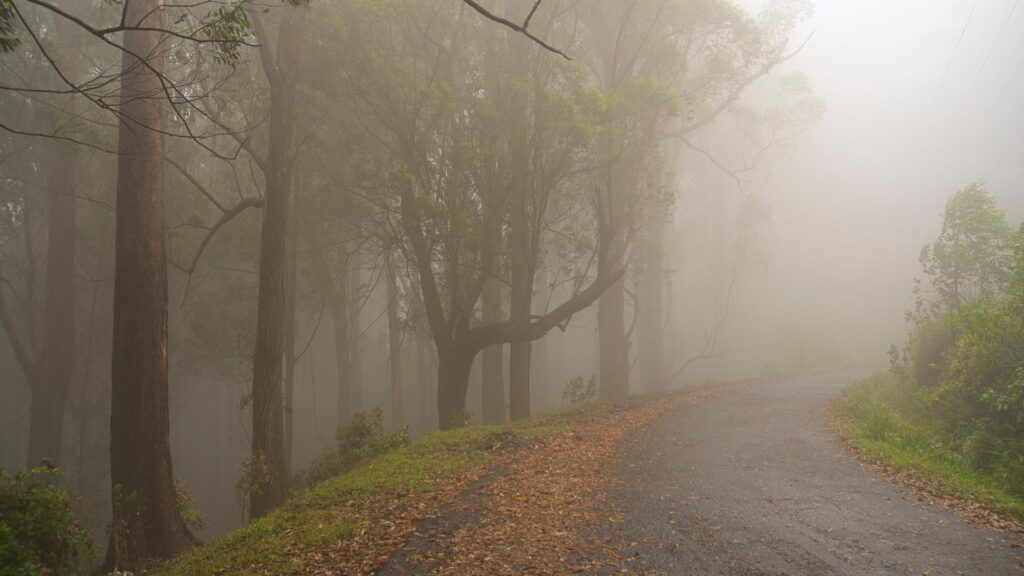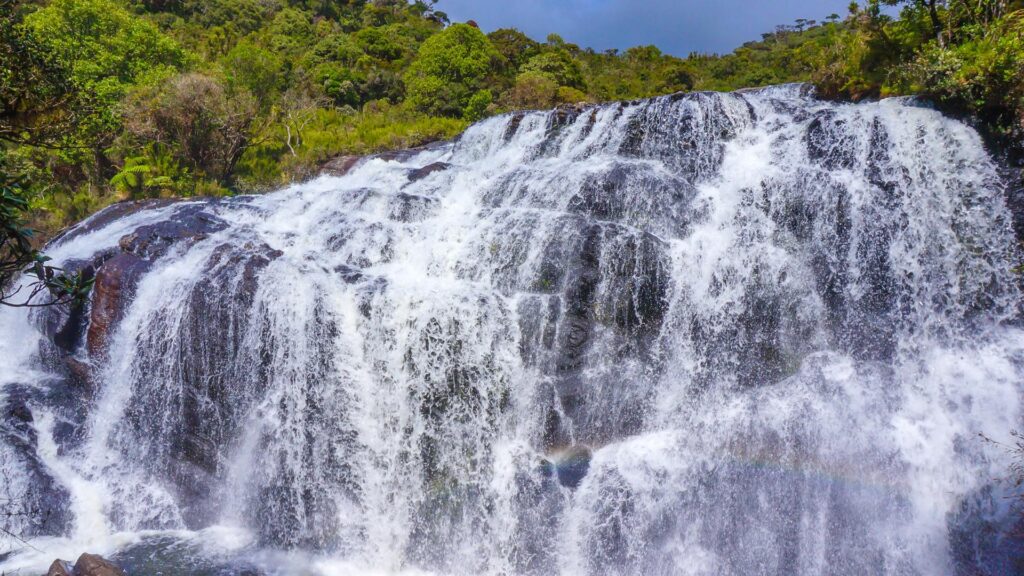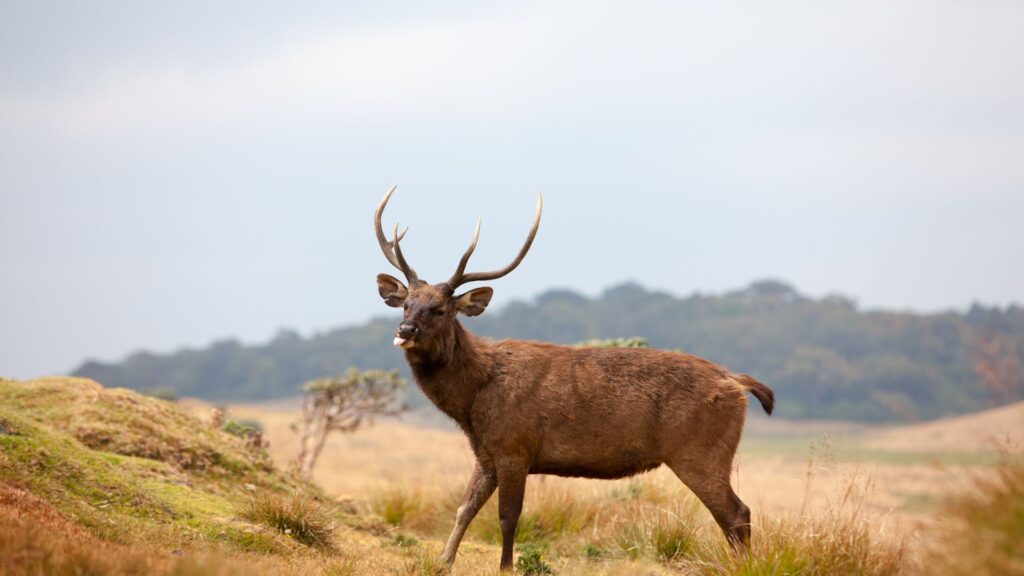Unveiling the Enchanting Mysteries of Horton Plains National Park – Sri Lanka
Horton Plains National Park is a true gem nestled in the heart of Sri Lanka’s stunning landscapes. It Is one of the most visited National Parks in Sri Lanka.
This pristine wilderness has attracted the hearts of nature enthusiasts and conservationists alike, earning its reputation as a must-visit destination for those seeking a deeper connection with the natural world.
A Brief History and Significance
Established in 1988, Horton Plains National Park has since evolved into a vital sanctuary for biodiversity conservation. Its origins trace back to a time when the need to protect the region’s unique flora and fauna became increasingly apparent.
Today, it stands as a testament to Sri Lanka’s commitment to preserving its ecological heritage for future generations.

What Makes Horton Plains a Must-Visit Destination
What sets Horton Plains apart is its remarkable blend of easily accessible diverse ecosystems, ranging from montane grasslands to cloud forests.
Here, visitors can witness a breathtaking panorama of rolling hills, cascading waterfalls, and mist-covered valleys. The park’s crown jewels include iconic landmarks like World’s End, where sheer cliffs offer awe-inspiring views of the endless horizon.
For nature enthusiasts, Horton Plains is a playground of discovery, with an array of endemic species waiting to be encountered.
From the elusive leopard, free roaming sambar deers to the colorful birdlife that graces the skies, every moment spent in this sanctuary is a chance to marvel at the wonders of the natural world.
Navigating the Pathways: How to Reach This Hidden Gem
Getting to Horton Plains National Park is an adventure in itself, offering travelers a variety of exciting routes to explore. Whether you’re starting from bustling Colombo, historical Kandy, or picturesque Nuwara Eliya, here’s a guide to help you navigate your way to this hidden gem.
1. Starting Points:
- Colombo: For travelers starting their journey in Colombo, the capital city, reaching Horton Plains typically involves a combination of road and rail travel. The distance is around 200 kilometers, and the journey takes approximately 5-6 hours by road.
- Kandy: If you’re beginning your trip from Kandy, known for its cultural heritage and scenic landscapes, you can opt for a road trip or take a train to Nanu Oya, which is the nearest railway station to Horton Plains.
- Nuwara Eliya: Located in the central highlands, Nuwara Eliya serves as a perfect base for exploring Horton Plains. The park is around 30 kilometers away (45 mins drive), making it a convenient starting point for a day trip.
2. Transportation Options:
- Scenic Train Rides: The train journey from Kandy or Nuwara Eliya to Nanu Oya offers breathtaking views of tea plantations, misty hills, and lush valleys. It’s a memorable experience that adds to the overall adventure of visiting Horton Plains.
- Road Trips: Traveling by road allows more flexibility, especially if you wish to make stops along the way to capture the picturesque landscapes or indulge in local cuisine at roadside eateries.
- Hire a vehicle or jeep from Nuwara Eliya: There are plenty of vehicles and jeep drivers at the Nuwara Eliya town to take you to the misty mountains.
3. Insider Tips:
- Best Route Selection: Depending on your preferences and time constraints, choose the route that aligns with your interests. For instance, if you prioritize scenic beauty, opt for the train journey. If you prefer a faster commute, a road trip might be more suitable.
- Timing Considerations: Plan your visit to Horton Plains early in the day to avoid crowds and witness the sunrise at World’s End, a mesmerizing experience that shouldn’t be missed.
- Entry Permits: Remember to obtain the necessary entry permits for Horton Plains National Park in advance, especially during peak tourist seasons, to ensure a smooth entry and avoid any last-minute hassles (The ticket office usually opens at 6.00 AM).
Embarking on a journey to Horton Plains National Park is not just about reaching a destination; it’s about immersing yourself in the natural splendor of Sri Lanka’s highlands, connecting with its diverse flora and fauna, and creating lasting memories amidst panoramic vistas and cascading waterfalls.
It has three main nature trails namely World End Nature Trail, Kirigalpotta Nature Trail, and Thotupolakanada Nature Trail. All three trails need average levels of fitness but are not recommended for a traveler who is more than 70 years old.
Plan your trip wisely, embrace the serenity of this hidden gem, and let the beauty of Horton Plains leave an indelible mark on your travel adventures.
Discovering Nature’s Canvas: The Geographic Splendor
Horton Plains National Park in Sri Lanka is a masterpiece of nature, where every turn reveals a new stroke of beauty on its canvas.
From mist-covered plateaus to verdant valleys, this park is a playground for those seeking the raw, unfiltered charm of the island’s highlands. Let’s delve into the geographic wonders that make Horton Plains a haven for nature enthusiasts.
1. Diverse Landscapes:
- Mist-Covered Plateaus: As you venture into Horton Plains, you’ll be greeted by ethereal mist clinging to the plateaus, creating an otherworldly atmosphere. The cool, moist air adds to the park’s mystique, especially during the early hours of the day.

- Lush Valleys: Descending from the highlands, the park unfolds into lush valleys adorned with a carpet of vibrant flora. The contrast between the misty heights and the verdant lowlands is a sight to behold, offering a harmonious blend of colors and textures.
2. Iconic Landmarks:
- World’s End: Perhaps the crown jewel of Horton Plains, World’s End is a cliff-edge viewpoint that offers panoramic vistas extending over 1,000 meters. The sheer drop from the escarpment unveils a tapestry of valleys, forests, and distant mountains, creating a breathtaking tableau that leaves visitors spellbound.
- Baker’s Falls: Another highlight of the park is Baker’s Falls, a cascading waterfall nestled amidst emerald foliage. The rhythmic flow of water against the backdrop of lush greenery adds a symphonic element to the park’s natural orchestra.

3. Geological Wonders:
- Escarpments and Plains: Horton Plains is characterized by its undulating terrain, marked by dramatic escarpments that define the landscape. These geological formations, sculpted over millennia, contribute to the park’s unique charm and provide a habitat for diverse flora and fauna.
- Prehistoric value: Scientists have found Barley pollen from the core sample of soil from the Horton Plains National Park which paints a different picture during the prehistoric time.
- Biodiversity Hotspot: The convergence of various ecosystems within Horton Plains makes it a biodiversity hotspot. From montane forests to grasslands, the park harbors a rich array of plant and animal species, including endemic and endangered ones.
Embarking on a journey through Horton Plains is like stepping into a living painting, where nature’s brushstrokes create an ever-changing masterpiece.
Whether you’re mesmerized by the misty plateaus, glued by the cliff-edge views at World’s End, or enchanted by the geological wonders shaping the park, every moment spent here is a testament to the splendor of our planet. Explore, discover, and let Horton Plains ignite your sense of wonder and appreciation for the natural world.
Wildlife Encounters: Fauna & Flora Extravaganza
Horton Plains National Park isn’t just about stunning landscapes; it’s also a vibrant sanctuary teeming with diverse wildlife and a rich tapestry of plant life. From majestic mammals to exotic flora, this park offers a captivating journey into the heart of Sri Lanka’s natural heritage.
Let’s explore the wildlife encounters awaiting visitors in this fauna and flora extravaganza.
1. Vibrant Fauna:
- Majestic Sambar Deer: One of the park’s iconic residents is the sambar deer, a majestic species often spotted grazing in grassy clearings or beside water bodies. These large herbivores add a touch of wilderness to the park’s ambiance.

- Elusive Leopards: While sightings are rare due to their secretive nature, Horton Plains is home to a population of elusive leopards. Lucky visitors may catch a glimpse of these elusive felines prowling through the forested areas.
- Rare Rhino Horned Lizard: A keen eye never misses this endemic Rhino-horned Lizard which is easy to find on tree barks around Baker’s Falls.
2. Kaleidoscope of Plant Life:
- Rare Orchids: Horton Plains boasts a rich diversity of orchid species, including rare and endemic varieties. Orchid enthusiasts will be delighted by the delicate beauty and vibrant colors displayed by these floral treasures.
- Endemic Shrubs: The park is also a haven for endemic shrubs and plants adapted to the high-altitude environment. From colorful rhododendrons to aromatic herbs, each species contributes to the park’s ecological richness.
3. Insider Insights:
- Prime Spots for Birdwatching: Birdwatchers will find Horton Plains a paradise, with numerous avian species gracing the skies and trees. Key spots for bird watching include the grasslands and water pools where you can spot endemic species like the Sri Lanka Whistling Thrush and Sri Lanka Yellow-eared bulbul.
- Animal Sightings: To maximize your chances of animal sightings, consider visiting watering holes and open meadows during the early hours of the morning or late afternoon. These times are when wildlife is often active and visible.
Exploring Horton Plains isn’t just about admiring its scenic vistas; it’s about immersing yourself in a living ecosystem where every creature, from the majestic sambar deer to the vibrant orchids, plays a vital role.
Whether you’re a wildlife enthusiast, a nature lover, or simply seeking a serene retreat amidst nature’s wonders, Horton Plains National Park promises an unforgettable experience filled with fauna and flora extravagance. Embrace the magic of the wild, and let the park’s biodiversity captivate your senses.
Weathering Nature’s Moods: Understanding the Climate
Horton Plains National Park in Sri Lanka is a realm where nature’s moods change with the seasons, offering visitors a dynamic and immersive experience throughout the year.
From misty mornings that shroud the landscape in ethereal beauty to sunny afternoons that unveil the park’s vibrant colors, understanding the climate of Horton Plains is key to planning a comfortable and enjoyable trip.
Let’s explore the seasonal nuances, weather-wise packing tips, and the best times to visit this enchanting park.
1. Seasonal Changes:
- Misty Mornings: Early mornings in Horton Plains often greet visitors with misty conditions, creating a dreamlike ambiance as the fog weaves through the trees and grasslands. This phenomenon is particularly enchanting around the World’s End viewpoint.
- Sunny Afternoons: As the day progresses, the mist tends to dissipate, giving way to sunny afternoons characterized by clear skies and pleasant temperatures. This is an ideal time for hiking and exploring the park’s trails.
- Sudden changes: Always ready for the sudden changes from sunny to cold and drizzling weather with chilling winds.
2. Weather-Wise Packing Tips:
- Layered Clothing: Due to the fluctuating temperatures throughout the day, it’s advisable to pack layered clothing. Start with a light jacket or sweater in the cool mornings and remove layers as the day warms up.
- Rain Gear: Although Horton Plains experiences relatively dry weather, occasional showers can occur (sudden showers), especially during the monsoon season. Pack a compact rain jacket or poncho to stay dry during unexpected rain spells.
- Sturdy Footwear: Comfortable and sturdy footwear is essential for navigating the park’s trails, especially if you plan to hike to World’s End or explore the surrounding areas, because some sections of the trail are highly eroded. .
3. Best Times to Visit:
- Optimal Experiences: The best times to visit Horton Plains for optimal experiences are during the dry seasons, which typically span from December to March and June to September. During these periods, the weather is more predictable, and you’re likely to encounter clear views and comfortable hiking conditions.
- Avoiding Local Crowds: To avoid crowds, consider visiting the park on weekdays or during the early morning hours. This allows you to enjoy the serenity of the surroundings and have uninterrupted moments with nature’s wonders.
Understanding the climate of Horton Plains allows you to embrace nature’s ever-changing moods and make the most of your visit.
Whether you’re hypnotized by misty mornings, bask in sunny afternoons, or seek the perfect balance of weather for outdoor adventures, planning accordingly ensures a memorable and comfortable experience in this captivating national park.
Pack wisely, choose the right time to visit, and let Horton Plains unveil its natural splendor in every season.
Embracing Harmony: Dos and Don’ts for Responsible Tourism
Visiting Horton Plains National Park in Sri Lanka is not just about experiencing its natural beauty but also about ensuring that your presence contributes positively to conservation efforts and respects the delicate balance of the ecosystem.
To make your trip both enjoyable and responsible, here are some essential dos and don’ts for responsible tourism at Horton Plains.
Dos:
- Embrace Mindful Exploration:
- Embrace the park’s tranquility and natural beauty with a mindful approach. Take the time to appreciate the flora, fauna, and landscapes without causing disturbance.
- Capture Memories Responsibly:
- Capture memories responsibly by refraining from disturbing wildlife or littering. Keep the park clean and preserve its pristine environment for future generations.
- Engage with Local Guides:
- Enhance your experience by engaging with local guides who can provide enriching insights into the park’s history, biodiversity, and conservation efforts. Their knowledge adds depth to your visit while supporting local communities.
Don’ts:
- Stray from Designated Trails:
- Avoid straying from designated trails for safety reasons and to minimize impact on sensitive habitats. Stick to marked paths to protect both yourself and the park’s natural resources.
- Interfere with Wildlife:
- Refrain from feeding or attempting to touch wild animals. Respect their space and natural behaviors for everyone’s safety and the well-being of the animals.
- Disregard Park Regulations:
- Respect park regulations and guidelines, including entry permits, trail rules, and waste disposal policies. Compliance with these regulations ensures a harmonious visit for all visitors and helps in conserving Horton Plains’ unique ecosystem.
- Horton Plains National Park is zero polythene zone, so don’t take plastic or polythene into the park’s nature trails.
- Smoking is strictly prohibited in National Parks.
By following these responsible tourism dos and don’ts, you contribute to the preservation of Horton Plains National Park’s ecological integrity while also enhancing your own experience through mindful exploration and respectful engagement with nature.
If you select any of the nature tour packages from us you have a great chance to experience this misty mountain range with unforgettable memories.
Let’s cherish and protect this natural treasure for generations to come.
